#film criticizing
Explore tagged Tumblr posts
Text
The Sets of Barbie, and Why it Deserved Better
I will be discussing the summer blockbuster Barbie and analyzing its production design. It draws inspiration from classic old Hollywood cinema, big budget glamor, childhood imagination, and so much pink. It’s a fantastic vision in plastic. In reality, it has so many elements combating for attention in the relatively short runtime that they don’t mesh together. The acting doesn’t hold up to the costumes, and the writing doesn’t stand out among its colorful world. Even the set design, while able to be praised in a certain point of view for its outstanding detail and reference to fifties Hollywood sets and dollhouse designs, only serves to highlight the lack of camp and emphasis in the actual film.
It’s a different direction for director Greta Gerwig and a massive shift for Barbie’s production designer Sarah Greenwood. Gerwig is most known for directing the hit drama film Ladybird and Little Women. Meanwhile Greenwood is also known for designing darker, more grounded films like Atonement and Disney’s live action Beauty and the Beast. In that way, Greenwood has previous experience translating a fictional animated concept to a gritter realistic take. Like Beauty and the Beast, it was well received by mass audiences but heavily criticized from hardcore fans and film buffs alike. While scores on Rotten Tomatoes seem favorable, their credibility has been put into question as of late. The scores on Letterboxd, a self proclaimed film fan site filled with serious fanatics, are less than favorable. Barbie’s case is similar, with favorable reviews across sites like Rotten Tomatoes and IMDB, and while its rating of 3.9 on Letterboxd is still good, the bad reviews are vicious.
For my two cents, I think the execution does not hold up to its potential. It disappoints me more than Margot Robbie’s incredibly average performance. The production design is the biggest perpetrator of this. The beginning of the film primarily holds us in Barbie’s world. It’s camp, colorful, high concept, and full of personality. But the further we go into the film, this personality feels emptier and shallower. The colorful world that serves as a character in its own right is revealed to be empty and lacking heart. We don’t even know where the Kens go. Details are forgotten in the name of dance parties and drama. Glittery outfits and the same feminist spiel we get from a first level women’s studies class. Some of this can be said to be done in the name of the film’s feminist message, with the lack of thought towards the Kens emphasizing their reduced positions and low importance in this world. The lack of detail in the Barbie's inner lives serves to emphasize the shallow flawed ideals they live by. The sets reflect these ideas perfectly, using the usage or nonusage of certain elements of typical set design to convey this. But that’s just one reading of the film. A less generous take would call it laziness.
Every home is pink, glittery, and missing walls and doors. They contain many false elements, like stickered backgrounds and plastic food. In an article on FastCompany by Nate Berg, we are told, “Greenwood and Spencer scaled down all the rooms by 23%”. As someone who owned Barbies myself, the dolls always felt too big for the rooms. The production design in Barbieland, more than anything, reflects the real toys used with the dolls, unless we are forgetting the film is also a big advertisement. The perfection and lack of wear on anything at all, from the furniture to the cars and clothing, reminds us they are somewhat fictional plastic people that we are seeing. They are self-proclaimed stereotypes of people and careers. They aren’t supposed to have flaws. Even the lack of detail in the backgrounds and the somewhat simple outer elements of the land reference backgrounds like Mount Rushmore in historic film North by Northwest, a staple of Hollywood in the forties and fifties.
When the film finally transitions into the real world, all of the magic is lost. Some of this is intentional, with the clear divide in the style of set and general design serving as a harsh cutoff between the two worlds. This is best shown in the transition between them: a montage of dollhouse-like sets, combined with cheesy Hollywood B-flick style props that perfectly expresses the campiness of Barbieland and the inspirations the film takes. This scene is everything the film touted itself to be, and if the whole movie was like this, I would have liked it much more. It was a mastery of set design dripping with talent and imagination. However this moment is quickly over as Barbie and Ken make it to the real city of Los Angeles.
There is nothing special about the urban cityscape or general design of the backgrounds for this section of the film, which actually comes rather quickly. We get to the meat of the central conflict very quickly, which in a movie filled with so many plot points, is a smart move. We have the most fun with set design in the real world when we get to the Mattel building, rightly so being the home of Barbie. Every office and boardroom is delightfully over-designed and filled with props and furniture that emphasizes the coldness of the running of Mattel, compared to its central message. The main boardroom with the heads of Mattel is central to this section of the film, with its grand design and enormous table making Barbie look small and all the other men in it besides Will Ferrell’s character look small and unified. They are meant to look like part of a group; an unknown mass of lackey’s that do what they’re told. This is expertly carried over when they continue to move as a group for the rest of the film. When Barbie rejects the choice they made for her, the ensuing chase takes us through the rest of the building. We pass an array of rooms that expertly reflect the cliche of sterile, lifeless, and uniform corporate offices. Rows and rows of identical cubicles, colder lighting, minimal props, and similarly dressed workers are seen. This allows the film to play more with things like movement, and they use this to their advantage to mimic classic musical choreography. The use of lines and symmetry in the cubicles and hallways makes Barbie stand out greatly in comparison to the uniform sets.
We are given another complete shift in production design when we enter the kitchen of a woman revealed to be Ruth Handler, the creator of Barbie herself in 1959. This is where the heart of the film lies, and it shows in the attention to detail and love given to Handler’s kitchen. As the effective ‘mother’ of Barbie, her home is made to look warm and inviting. It’s what you picture when you think of an elderly grandmother’s house, bathed in nostalgic golden light and anachronistic props. Every cup and dish rag was thought of, and while not an exact replica of Handler’s real home, accurately reflects what homes would have looked like. Although Handler wouldn’t have been that age in the fifties, the time period the kitchen is set in. This still works to show the otherworldly of the set, and tells us its a place removed from time and created from memories. With her table littered in fabric and designs, we are shown she is a creator, someone important before we know her true identity. Despite the lack of knowledge of her true name, we know that she is wise, who understands Barbie and holds power as a woman. She helps Barbie on her way, and we are left with a sense of a fading memory, a home we don’t know anymore.
When Barbie returns to Barbieland, it has been taken over by the Kens. The physical dollhouses the Barbies lived in have not changed, but the details have been reversed to reflect the false machismo that the Kens are trying to emulate. This is where the film gets incredibly divisive, relying on intense stereotypes and caricatures of what makes a mostly American man. Most of this is done in service of the idea of the inherent toxicity in America’s perception of manhood. Trucks, beer, eagles, sports, and mansplaining abound. However in the eyes of many, including myself, it was insensitively handled. It has a good heart, with an honest core message that is greatly misunderstood, largely because of its lack of tact in delivering that message. This is reflected in the set, with the Barbies' homes simply having their sequined pillows switched out for leather ones, their pink corvettes swapped for big trucks, and their fifties decor swapped for flatscreens and mini coolers; Everything one would expect from a frat house or typical man cave. It’s cliche and delivers the message too hard, so many came from the film thinking of it as anti men and toxically feminist. These views are best summarized in an article on The Los Angeles Times by Matt Pearce called ‘Commentary: Barbie Haters Misunderstand What It Takes to Be Kenough’. We are told that the film is too anti-men by many people, like alt-right commentators Ben Shapiro, film critic Kyle Smith, and conservative talking head Candance Owens. “All men suck” is what rings most loud and clear to those unaccustomed to modern feminist theory.
Despite this, that simply isn’t true. It never was. The movie is critical, harsh and unafraid to be mocking to make its point. The production design of the Kens world highlights the ridiculous nature of the characters they are embodying. Their clothes, their cars, and their homes look stupid because the idea of a man they are trying to be is stupid. In the end, the Kens find acceptance in themselves and revert to their classic colors and styles. However, for my part, they didn’t go far enough with the design. In a sense, the set design was lacking, so that it wasn’t obvious enough it was a joke. Because of that, the truth of the film's core message is swept away in favor of a typical girl power moment and matching jumpsuits.
After this, we see Handler again, and Barbie makes the final choice to become human. We get no significant production design moments, except the lack thereof in the moment that Barbie comes to life, the white void shows us she is in a world between worlds. The lack of set, with only glowing lights for company, pulls the focus entirely to our characters, and this final choice: Barbie has her moment, and the last set we see is a fancy-looking gynecologist's office.
My biggest gripe with Barbie in the end is that it didn’t do enough. It wasn’t feminist enough, spoon feeding us basics for the sake of mass audiences. It wasn’t campy, fun or exciting enough. The production design worked so well in several parts of the film, largely doing the heavy lifting for the film's tone and energy level. However there is so much potential that could have gone to more scenes like the expertly done ‘I’m Just Ken’ sequence. Eventually Barbieland gets old and the real world is mostly uninteresting. After the set's initial showing, the wow factor wears off and it becomes monotonous and unnoticeable. The expert work of Greenwood and everyone involved in production design deserved more of a chance to experiment and play in such a unique world with all its high concept ideas and exciting potential. The film as a whole disappointed me in its lack of oomph. The masses may adore it, but all I see is a movie that fell just that short of its massive potential.
0 notes
Text
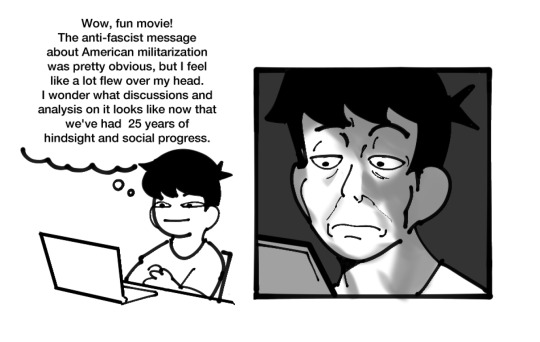
I watched Starship Troopers tonight.
#personal#dumb#my art#immediately after finishing i was pumped to watch some analysis vids on it#cuz i heard a lot of the drama about the original author being a pro military fascist and the director going “fuck that” and making a satir#scrolling through youtube search results was not promising. lots of male film buffs i would Not trust even on a first glance.#“The Critical Drinker” (pfp of a bearded man drinking alcohol) lol.#and then I saw cinemawins did a video on it and was like oh nice i haven't seen his stuff in a while but he's a pretty leftist creator#scrolled through the comments#second panel face#this sucks i'm outta here.#just leagues and leagues and leagues of anime pfps and right leaning people dogpiling on him for “not understanding what fascism is”#idk it's pretty alien and weird to me watching this movie and going “wow yeah that was pretty obvious huh” like literally the from opening#to the teacher preaching militance and only giving voting rights to “those who serve their nation first and earn it”#and then seeing droves of people online going#WHAT ARE YOU TALKING ABOUT? It's not anti-fascist and even if it was it's#the director's fault for desecrating heinlein's incredible sci-fi epic vision. ermm media literacy is dead.
5K notes
·
View notes
Text
“Monkey Man” was shot and completed in 2021, and Netflix soon after acquired the rights for around $30 million, but it’s been on the shelf for three years and they‘ve all of a sudden decided to get rid of it? What gives? It turns out, according to an in-the-know source, that it was the portrayal of a fictional right-wing Hindu Nationalist character in the film that worried Netflix about their future dealings in India. And even though they had paid more than twice the production cost, they decided to give the film back to the producers, which is what caused the long delay. Universal and Peele eventually took a particular liking to the film, so much so that they suggested possible editing changes and delayed the release until what they thought would be the right date. It’s as simple as that. In the end, it was all about politics and optics for the streaming giant, especially since India has become the current top growth market for Netflix. Co-Founder Reed Hastings has mentioned that a majority of the service's next 100 million subscribers would most likely come from India.
Universal/Jordan Peele's "suggested possible editing changes" in question:


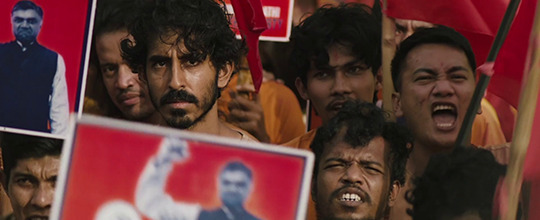
#monkey man#dev patel#jordan peele#film#i have to laugh!!!!#also have read some south asian critics on twitter saying the way it's edited renders the politics of the film vague and incomprehensible#i'm still looking forward to it of course but it's just a shame!!
4K notes
·
View notes
Text
The biggest misunderstanding about Caitlyn from fans actually comes from season 1, not 2. Fans see Caitlyn break Vi out of prison and talk to Ekko about empathy and think that she’s learning and growing as a character and then when season 2 hits they think all that growth was somehow “abandoned” or “reversed.”
But that’s not true.
Caitlyn has ALWAYS been a spoiled little rich girl who came from a family of rich people who are so used to how much power they have in the city that they don’t regard ANYONE’S feelings or respect ANY rules. Both Marcus and Salow spell this out to us.
Marcus: “She’s a Kiramman! Just like them she does what she wants! I can’t control her!”
Salow: “It’s the name! It bewitches people.”
Time skip Caitlyn is introduced investigating the botched Jinx job at the shipping docks. She is not an official detective and Marcus makes it clear she isn’t supposed to be there. She’s supposed to be guarding her family’s pavilion, but she ignored both her mother’s AND the sheriff’s wishes to investigate a crime because she’s bored.
She breaks Vi out of prison AFTER she’s been effectively laid-off by Marcus, using her connections to Jayce to forge her release papers. Reminder: at this point in the story she is technically not a cop anymore. She’s doing all this stuff with noble intentions of trying to uncover Silco and bring Jinx to justice… but what she’s doing is technically illegal. And the only reason she’s able to get away with it is because she’s a spoiled rich BRAT.
Her privilege shields her from repercussions in season 1, just as they do in season 2.
The difference is that she’s now been traumatized by Jinx. Her bodily autonomy was violated by Jinx kidnapping her when she was literally naked in the shower, she was most likely tortured by Jinx, was tied up and painted on, threatened to be executed at gun point by Jinx, and then to top it all off Jinx murders her mother in a terrorist attack.
And Caitlyn tries to hold it all in. She tries to confide with Vi, she tries to let her hatred go… but both times she is denied her the ability to grieve properly. First by her privilege and not understanding that asking Vi to become an Enforcer would be rejected. And then by Ambessa by funding the attack on the memorial service.
She has no parental figure to guide her, her rage and hatred for Jinx is boiling over… so she resorts to what she always does and what she did back in season 1. She just does what she wants to get her way. She convinces Jayce to develop hextech weapons, she assumes the role of leader for house Kiramman, and she uses her unique position in power to bend systems her family put in place to protect Zaun against them.
Caitlyn in season 2 is very much the same Caitlyn we’ve always known from season 1. The difference is that in season 1 we were rooting for her because we like Vi. She exhausted the same disrespect for authority and people back then but they were in service of things we, the audience, liked. So we gave her a pass. We excused her rule breaking. We ignored her unique brand of privilege because we liked what her privilege could unlock for us.
Season 2 slams that door shut and tells us “no, actually, you weren’t supposed to like this because nobody in power is innocent.”
But rather than learn more about Caitlyn and understand her character better… people are dismiss this all as “bad writing” or “character assassination.”
And what’s more frustrating is the whole “dictator arc.” Because frankly I would argue that by that point Caitlyn HAS learned her lesson about privilege and power, but it’s too late to stop things now. Just as Jayce going vigilante in season 1 was the start of a cataclysmic event, Caitlyn gassing Zaun to look for Jinx results in Caitlyn losing everyone she trusts and respects. Broken up with Vi and alone, she is suddenly granted even MORE power than she’s ever had by Ambessa. And you can see it affect her. In that moment she realizes that Ambessa is the one who spearheaded the attack on the memorial. After seeing what happened between her and Vi, she realizes that by taking this role she will be responsible for even greater atrocities.
She has 2 choices. Let it all go, or use the position of power to her advantage. And just like before in season 1… she chooses the later. Her goal may still be to get Jinx, but she does NOT want to be a part of Ambessa’s dictatorship. This is why she’s so reluctant to join even with all the peer pressure. This is why she’s so slow and hesitant to walk forward. And she only accepts the cape she is crowned with once Ambessa says “your mother will have justice.”
What’s most important about this scene is that SHE KNOWS Ambessa is using her. That’s why when we see her in Act 2 she’s already trying to counter Ambessa’s plans. That’s why she’s constantly challenging Ambessa with “why is peace always the excuse for violence?” That’s why when Ambessa says “you don’t trust me?” Caitlyn responds with a resounding “no.” And that’s why when Vi drops back into her life she realizes she has an opportunity to correct her mistakes. She doesn’t switch on a dime because Vi fluttered her eyes and called her “cupcake.” She switches because she was already looking for an out. And this is why when Vi confronts her in Act 3 she screams “I KNOW.”
Caitlyn’s arc is that of someone who always had privilege and power coming to realize too late how dangerous and harmful that power is. By the time she learns her lesson she’s already entrenched with Ambessa and stuck in this hateful miasma for Jinx. Season 1 was setup for what was going to follow with how her character was going to learn and atone for her mistakes.
And what’s so god damn frustrating about all the discourse around Caitlyn is how reductive and dismissive it all is. So much of the discourse completely ignores the actions she takes to fix things in favor of trumping up the actions she took to get there. All of her transgressions in season 1 are ignored and her own internalized growth is reduced to a joke about Vi calling her cupcake. It’s MADDENING.
#arcane#arcane season 2#arcane spoilers#caitlyn kiramman#caitvi#vi arcane#violyn#arcane s2#vi#caitlyn league of legends#film criticism#arcane analysis#arcane character analysis
1K notes
·
View notes
Text
My new essay about the interconnections between transmisogyny and pluralphobia is live right now! It's titled "Transfemininity and Dissociative Identity Disorder: An Undertheorized Intersection," and you can read it here ✨
#dissociative identity disorder#plurality#pluralphobia#plural system#actually plural#multiplicity#did osdd#osddid#osdd#did system#trans fiction#trans literature#transfem#literature#booklr#books#transfeminism#literary criticism#film critique
896 notes
·
View notes
Text
I do find it entertaining that when I see anything on Instagram about Lisa Frankenstein there’s always a couple people like “ew necrophilia” and “ruined a classic” and then over here on tumblr we’re all just like “yes girl get it, this is peak romance”
The duality of man I guess .
#I sometimes forget that the rest of the internet isn’t like this#romance is an undead victorian trans guy with great sideburns who would kill for you and i will not be taking criticism on this statement#lisa frankenstein#this film was made for the tumblr girlies
1K notes
·
View notes
Text

The Boy and the Heron How Do You Live? (2023) dir. Hayao Miyazaki
#my real thoughts on the film are still Cooking but i felt compelled to make this.#also i might fuck around and retag my posts about it with the original title after all bc let's face it: it's just better#the boy and the heron#how do you live?#studio ghibli#hayao miyazaki#my edits#highly recommend david ehrlich's review. i don't always agree w/his critiques but he Gets miyazaki in a way that many other critics don't
3K notes
·
View notes
Text
Monday, December 18.
Willkommen.
History was made on this day, twenty years ago. The last installment in The Lord of the Rings trilogy, The Return of the King, was released in cinemas. It grossed over $1.1 billion worldwide, making it the second highest-grossing film of all time. It won all eleven Oscars for which it was nominated, including Best Picture (the first fantasy to do so), at the 76th Academy Awards. The sequel to 2002's The Two Towers, and the completion of the story started by The Fellowship of the Ring, it was a cinematic landmark and a pop culture behemoth. Like its two predecessors, the film was widely acclaimed by critics and loved by audiences across the globe. But they were, all of them, deceived—for another film was made.
In 2004, Dominic Monaghan, the actor alias used by renowned German film critic Hans Jensen, interviewed the trilogy's star, Elijah Wood. In these nine bracing minutes of footage, Mr. Jensen probed his interviewee on the matters of the day: losing time within yourself, kicking balls, dolphins, and the wearing of wigs. It makes for quite remarkable viewing almost two decades later.
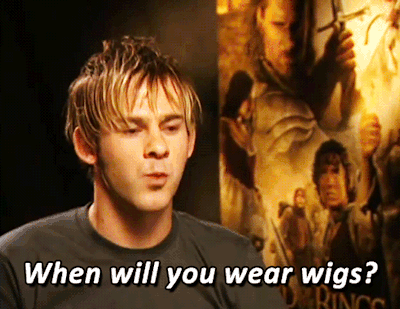
#today on tumblr#lord of the rings#LOTR#elijah wood#dominic monaghan#hans jensen#german film critic#wigs#when will you wear wigs#return of the king#lotr memes#tolkien#the lord of the rings#jrr tolkien#middle earth#lotr shitpost
1K notes
·
View notes
Text
DATV Lore Reveal Summary:

#I WAS ALWAYS THERE#local egg ruins everything#behind every lore reveal is a sad egg lmao#unrelated but I love this film and the Last Wish was *chefs kiss*#datv spoilers#datv critical#dragon age the veilguard#bioware critical#only gif of this I could find and its crap quality :(
234 notes
·
View notes
Text
viewing the fnaf movie as just a movie doesn't work. you're sabotaging yourself and taking away all the enjoyment from it if you don't think of it as the fnaf movie. if i look at it as just a movie, then yeah, i totally get what the critics are saying. it's so far from the lore of the original games (but since when has that not been a problem in the franchise lmao), the killer doesn't really have a clear motivation, and the ending does kind of come out of nowhere. but if i think of it as the fnaf movie i can actually love it. yes, it's far from the original lore. that's just how fnaf goes. yes, it is a glorified two hour lore dump. but could we want anything more from fnaf? it's literally infamous for the lore. sure, springtrap does kind of come out of nowhere. but the joy and whimsy experienced when he does show up is fucking amazing, actually. i don't care if it's a bad movie. it's the best viewing experience i've had in 2023.
#does this even make sense#lmao#its kind of a rant#but pretty much everything i post is kinda a rant#fnaf#fnaf movie#fnaf movie spoilers#????#five nights at freddy's#william afton#springtrap#i don't give a shit whether or not it's an objectively bad film#i loved it#this movie wasn't made for critics anyway#it was made for fans and people who grew up with it
2K notes
·
View notes
Text

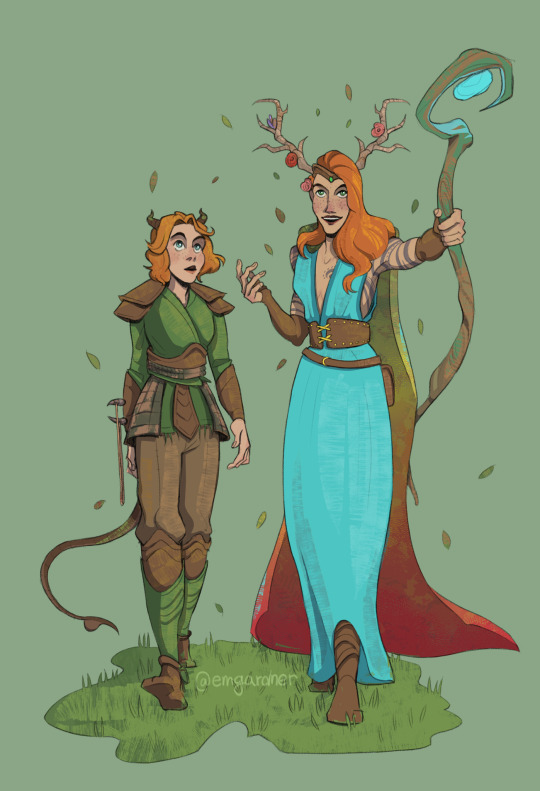
two red-headed part-human druids who will do whatever it takes to protect their homes ??? sign me up
#critical role#cr1#keyleth of the air ashari#keyleth#my art#fanart#art#vox machina#dnd#doric#doric the druid#sophia lillis#marisha ray#dungeons and dragons#dungeons and dragons: honor among thieves#honor among thieves#did this instead of working on my short film for school that’s due in two weeks :’)))))#the way fanart pours out of me during crunch time is CRAZY
4K notes
·
View notes
Text
i think its important to acknowledge that at least part of the reason why hollywood was reluctant to pick up david lynch's projects is because he told a story about a girl abused and murdered by her father in a way that was not exploitative of victims and quite openly showed the cultural facades of normalcy abusers rely on to get away with abuse as absurd even in being comfortable and familiar. and in doing so lynch shed light on an uncomfortable truth about the world that is a reality for people that oppressors generally dont want to have voices. and david lynch gave those people voices without titillating or portraying them merely as victims, and deep down that's the reason why he hasnt had a movie produced since 2006
#david lynch#twin peaks#i do genuinely think this is true once you touch on themes like this its hard to go back to anything else bc they feel so raw and vital#you can see it beginning to emerge in wild at heart and surprise critics hated the film on release
298 notes
·
View notes
Text

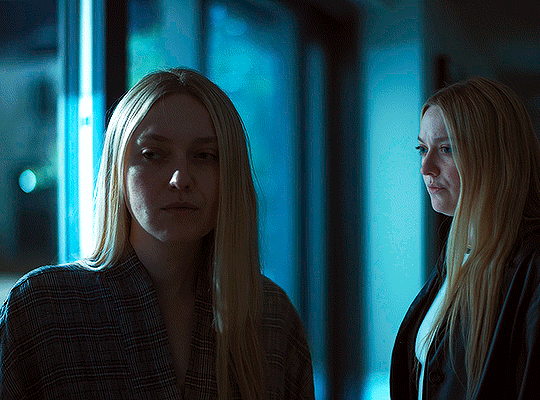

I know what it's like to feel like half of you is evil. It can turn you into something you don't recognize. I think there are others like you out there. What if you could find them? We don't have to be alone anymore.
THE WATCHERS (2024) dir. Ishana Night Shyamalan
#dakota fanning#the watchers#the watchers 2024#filmedit#movieedit#filmgifs#fyeahmovies#gifs*#the watchers spoilers#this was excellent foreshadowing#I don't know who to tag cause all of my mutuals who have seen it so far gave this film 2.5 stars 😭 AND I dont wanna post spoilers in tags#critic on collider who called this movie “a nepo nightmare" you went into this ready to be a hater you didn't even give it a chance
415 notes
·
View notes
Text
Just saw a "feminist" video essay (by someone who just happens to only talk about feminism in relation to cishet white able bodied women) say that the Hays Code was good for women because it "prevented them from sexualizing women by preventing onscreen depictions of sex". Never before has a video said something that made me vocalize my disgust of it's takes, but this did it.
I didn't think I would have to say this but if you defend the Hays code you are horrible and not in any way progressive. And if you don't know what it is please look it up because it's probably the most important piece of history when it comes to all media analysis in the western world.
#196#my thougts#leftist#leftism#feminist#feminism#queer#media criticism#media literacy#media analysis#the internet#social commentary#discourse#proship#fuck antishippers#hays code#film history#cinema#white feminism
554 notes
·
View notes
Text
Still not over the part in the Todd in the shadows video where James Somerton claims that the success of rocky horror saved the film studio. Girl she flopped. Famously she flopped.
#hbomberguy#like how do you have a career as a queer media critic and you think the rocky horror picture show was a successful film release#does he also not know what cult classic means
992 notes
·
View notes
Text

It’s insane how out of touch movie critics are.
#fnaf movie#fnaf#five nights at freddy's#five nights at Freddy’s movie#rotten tomatoes#movie critic#source: that one film theory episode about how rotten tomatoes movie critics are out of touch
1K notes
·
View notes